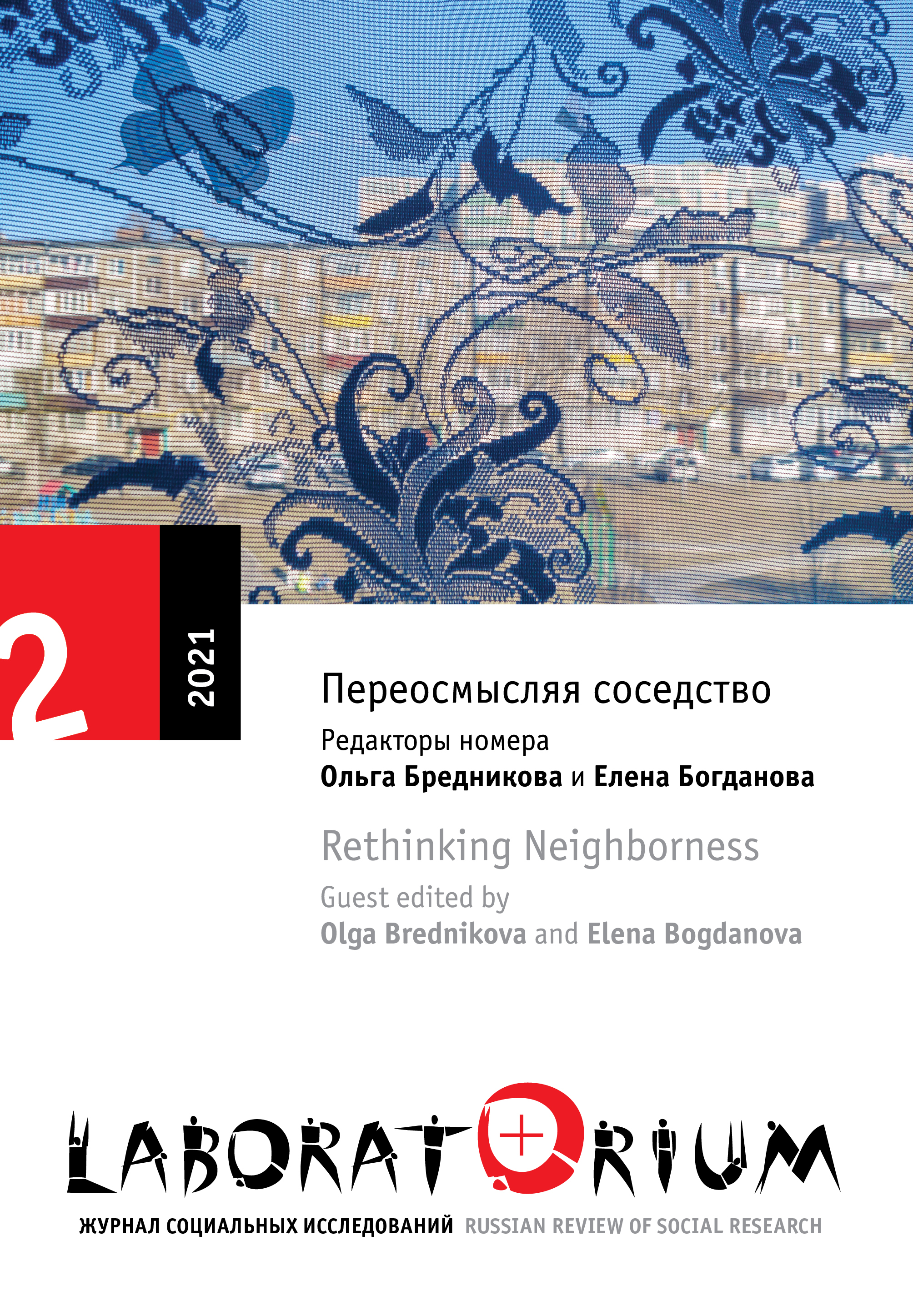Retro-Neighborhood: Constructing Community in Museum and Local-History Projects
Main Article Content
Abstract
The essay is devoted to the description of retro(spective) neighborhood—a specific type of local community, constructed in modern museum and local-history projects. I use this term to refer to communities that, unlike ordinary neighborhoods, are based not on routine everyday practices and interpersonal communications, but on memory and a special attachment to the place. The essay examines the principles and mechanisms of such communities’ production in two museum projects implemented in Moscow since 2017: Basmannyi District Museum Basmaniia and the neighborhood programs of the Moscow Lights Museum (“Armenian Lane: Neighbors” and “Together with Neighbors”). I consider specific neighborhood models in the context of common for both projects framework of the synchronous combination of local-history and social components. Of the different forms and methods of these combinations used by the projects I examine, I pay special attention to those where the local history content is framed as everyday neighbor practice. My analysis identifies key concepts and specific features of the studied neighborhood models. This study is based participant and nonparticipant observation conducted in 2017–2020, several interviews, and a number of other materials including museum projects’ websites and pages in social networks.
Text in Russian
Keywords
Neighborhood, Memory, Local Community, Local History, Museum
Abstract 212 | PDF (Русский) Downloads 165


